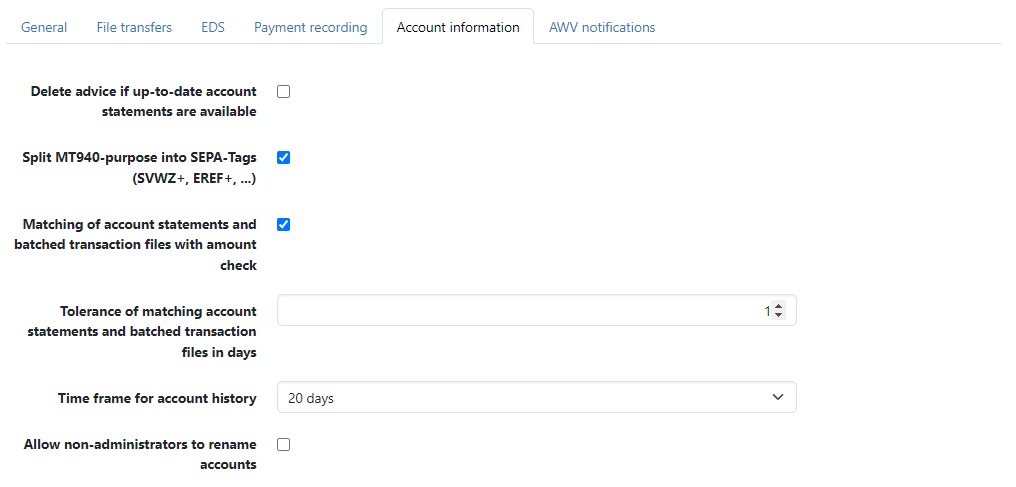
Figure: System settings for account information
This tab is available for administrators and managers and is the same for the entire installation and for individual tenants. It refers to the electronic account information of the banks. Only administrators can edit Display settings and Cleanup settings for the entire installation. These are described in the following sections.
Advices are kept by default after the regular account statements have arrived to enable a matching between the advice note and the account statement. Advices can be deleted manually. If you no longer require payment advices as soon as the corresponding account statements are available, select the checkbox to enable automatic deletion.
By default, information from SEPA payments is stored structured in the field Intended purpose of account statements in MT940 format using SEPA tags. This allows information such as the purpose (SWVZ+) or the end-to-end reference (EREF+) to be made visible in the posting details.
Data matching between account statements and batched transaction files is established by matching reference numbers. In certain cases, the matching may not work reliably either via the reference numbers or via the time restriction of the tolerance value. By default, the amount of the batched transaction is also used for matching. This setting has priority over the matching in days.
The reference numbers used for data matching between account statements and batch transaction files can occur more than once. For this reason, a time window is also applied. One day is preset. Adjust the period in days if necessary.
The time frame determines the retrieval of historical account statements. Possible values are 7 days, 2 weeks, 20 days, 4 weeks, 90 days, 6 months and 12 months. The default value is 20 days.
By default, users without administrator rights can change the description in the account settings, but not the field Name. By checking the checkbox, you generally allow users to rename accounts. This permission applies to users whose user settings have the setting User is authorized to view banks and accounts in the settings menu checked.

Figure: System settings for account information